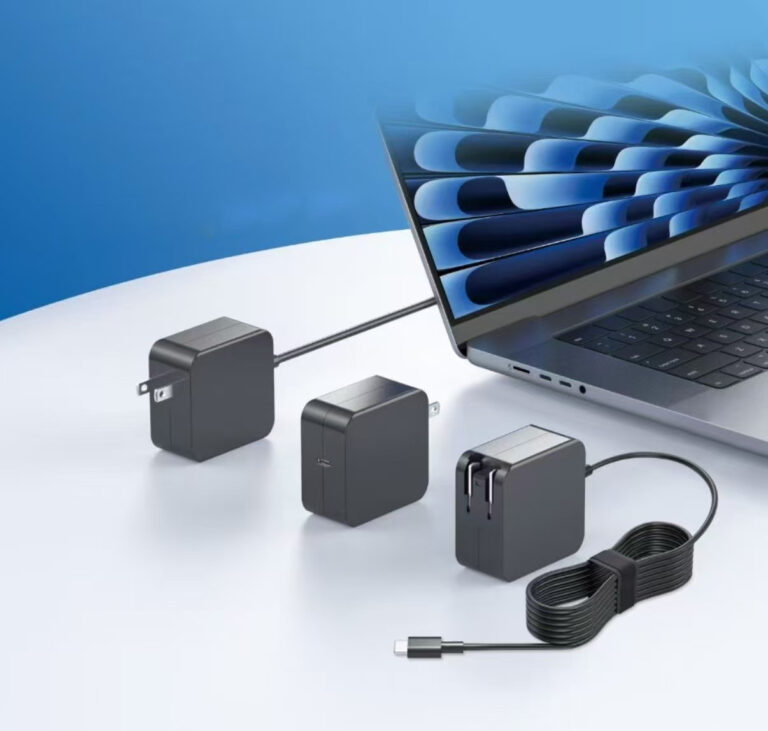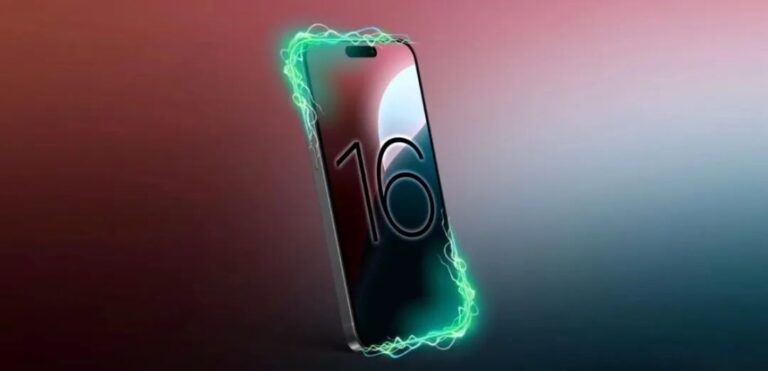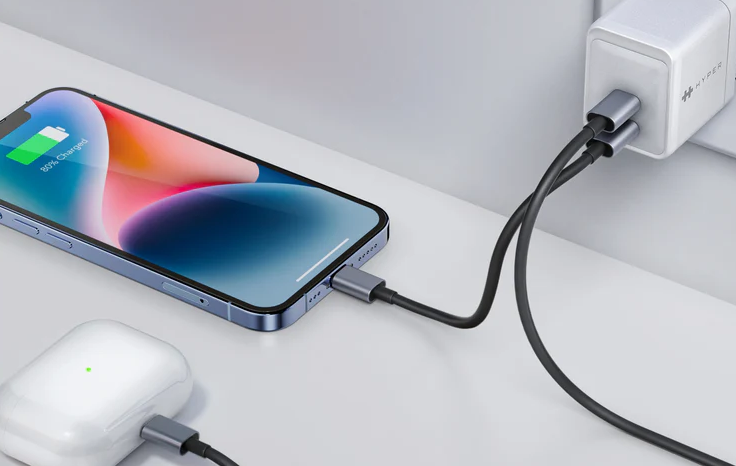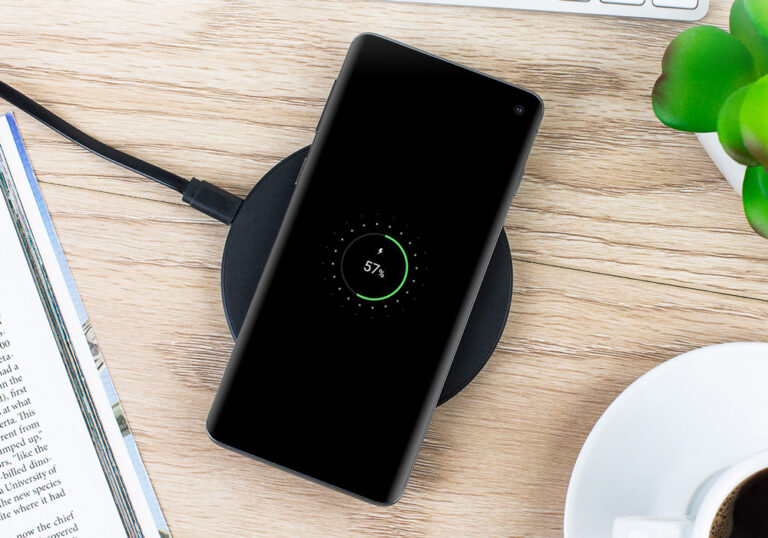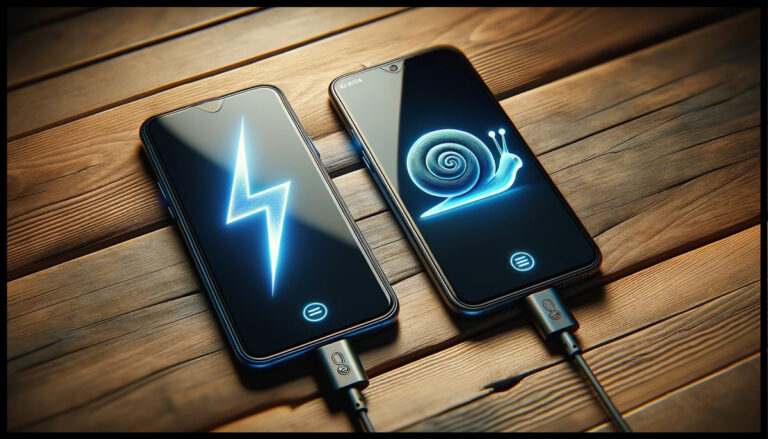The fast charging of mobile phones is related to the following four factors:
- Charger (It is also easy to understand, otherwise the power supply is not supported and it cannot be charged quickly)
- Charging cable (yes, the cable also matters, because the cables for different charging protocols are different)
- Mobile phone (nonsense, otherwise why would you need a fast charging power bank)
- Charging protocol ( very important, the most difficult part )
To support fast charging, you must first decide on the protocol, and the support of the protocol requires the cooperation of the charger, charging cable, and mobile phone. Because the protocol has agreements on Type-C contacts, acceptable voltage and current, etc., so the simple definition of the contacts requires the cooperation of the charging cable, mobile phone, and charger.

So in addition to the protocol, the charger, charging cable, and mobile phone are all indispensable for fast charging support.
This is why devices like the iPhone tell you to buy cables and chargers that support USB-PD.
Similar to Huawei and Honor, they will tell you to buy a charger and charging cable that supports SCP.
Let’s talk about the principles. Fast charging means higher charging power.
From junior high school physics, we know that power = voltage × current
Therefore, if you want to charge at high power, there are basically 3 ways to achieve fast charging:
- Increase the voltage
- Increase the current
- Increase voltage and current at the same time
These are the three major schools of fast charging.
In addition, how do you know whether fast charging is needed? This requires the fast charging protocol to come into play.
The fast charging protocol can be simply understood as stipulating what voltage and current both parties support, how to shake hands, how to increase power, etc.
Similar to a highway, the speed on ordinary roads in the city is 60 km/h, and then the traffic sign changes it to 80 km/h. Once you get on the highway, you will see 120 km/h. This is achieved by traffic signs.

The fast charging protocol is also an agreed upon set.
Some public ones are USB-PD (developed by USB-IF), QC (developed by Qualcomm) protocols, etc.
Then there are different manufacturers’ own, such as Huawei’s FCP, SCP, OPPO’s VOOC/Super VOOC, vivo’s FlashCharge/Super FlashCharge, Xiaomi’s ChargeTurbo/SuperCharge Turob, and so on.
A brief introduction, if you are not interested, please continue to scroll down:
- Qualcomm’s QC fast charging
QC is the abbreviation of Quick Charge. The 1.0 version of the protocol was defined in 2013, and later versions 2.0, 3.0, 4.0, 4.0+, and 5.0 were added. QC4.0 has been compatible with the USB-PD fast charging protocol. Qualcomm’s QC fast charging protocol follows the school of increasing voltage.
Currently, the QC fast charging supported by mobile phones on the market is QC3.0 and QC4.0/4.0+ protocols. QC3.0 can reach up to 36W, and QC4.0/4.0+ can reach up to 100W.
- USB-PD fast charging
USB-PD is the abbreviation of USB Power Deliver. This protocol was developed by the USB Implementers Forum ( USB-IF). There are three versions of the protocol: 1.0, 2.0, and 3.0. 1.0 uses the USB-A port, and starting from 2.0, it must be a USB-C port. Therefore, the most common devices on the market are USB-PD 2.0 or USB-PD 3.0 protocol devices. Later, USB-PD 3.1 could reach a maximum of 240W, but 140W is more common on the market.
Since iPhone/iPad supports this protocol, and programmable power supply (PPS) was added in version 3.0, it is compatible with QC4.0+.
- MediaTek PE+ fast charging
PE+ is the abbreviation of Pump Express+. MediaTek devices generally use this fast charging protocol, and have also gone through versions 1.0, 2.0, 3.0, and 4.0.
In 2.0 and before, a high voltage and low current solution was used, and 3.0 and 4.0 switched to a low voltage and high current solution. At the same time, starting from 3.0, it is compatible with the USB-PD fast charging protocol.
- OPPO’s VOOC/Super VOOC fast charging
VOOC fast charging is a low-voltage, high-current style, and also has 2.0, 3.0, and 4.0 versions. There are also Super VOOC/Super VOOC 2.0 versions, which only support some models.
Considering that VOOC is a non-standard and open protocol, mobile phones that use this protocol still need to buy fast charging accessories from the mobile phone brand itself. It is also rare to see third-party accessories that use this protocol on the market (realme and OnePlus also use this protocol).
Special reminder: although the cables from these two companies look like common cables on the market, they actually have chips inside. You must buy a set of cables from the two companies to achieve fast charging effects.
FCP is the abbreviation of Fast Charge Protocol, SCP is the abbreviation of Super Charge Protocol. SCP was born later than FCP. FCP has a maximum power of 18W, while SCP can reach a maximum power of 100W or higher. FCP is a high-voltage and low-current school, while SCP is a low-voltage and high-current school.
Similarly, the fast charging heads and power banks that support Huawei are basically original ones, and third-party ones are relatively rare. Huawei-authorized chargers are up to 40W, from manufacturers such as Bull and UGREEN. Currently, only Huawei and Honor have chargers that exceed 40W.
- VIVO FlashCharge/Super Flash Charge
In the high-voltage and low-current school, the two generations of FlashCharge can reach 22.5W and 30W respectively, and Super Flash Charge has reached 120W and higher.
- Xiaomi Charge Turbo/Super Charge Turbo
Charge Turbo is up to 40W, using a high voltage and low current approach, and Super Charge Turob has reached 200W.
- Samsung AFC
The abbreviation of Adaptive Fast Charging, now the maximum power supported is 45W, USB-PD is compatible, and it is a high-voltage genre.
- DCP Protocol
An early fast charging protocol of the USB Developer Forum (USB-IF), high voltage style, 7.5W power.
The premise for a mobile phone to support fast charging is that both parties agree on and implement the charging agreement.

The charging head is responsible for providing the voltage, current and handshake capability required by this protocol, and the mobile phone is responsible for accepting this voltage, current, responding to handshake and charging.
The implementation and support of this charging protocol is related to the mobile charging cable.
Then these protocols are divided into public and private. For example, QC and PD are public, while Super VOOC, Super Flash Charge, Super Charge Turbo, etc. are private.
Public means that you can most likely buy charging heads and charging cables produced by a third party that is not the contractual owner.
A private agreement means that in theory you can only buy charging heads and charging cables produced by the agreement owner or authorized party.
If you don’t want to spend a lot of time understanding these things, it is safest to buy the original ones.

